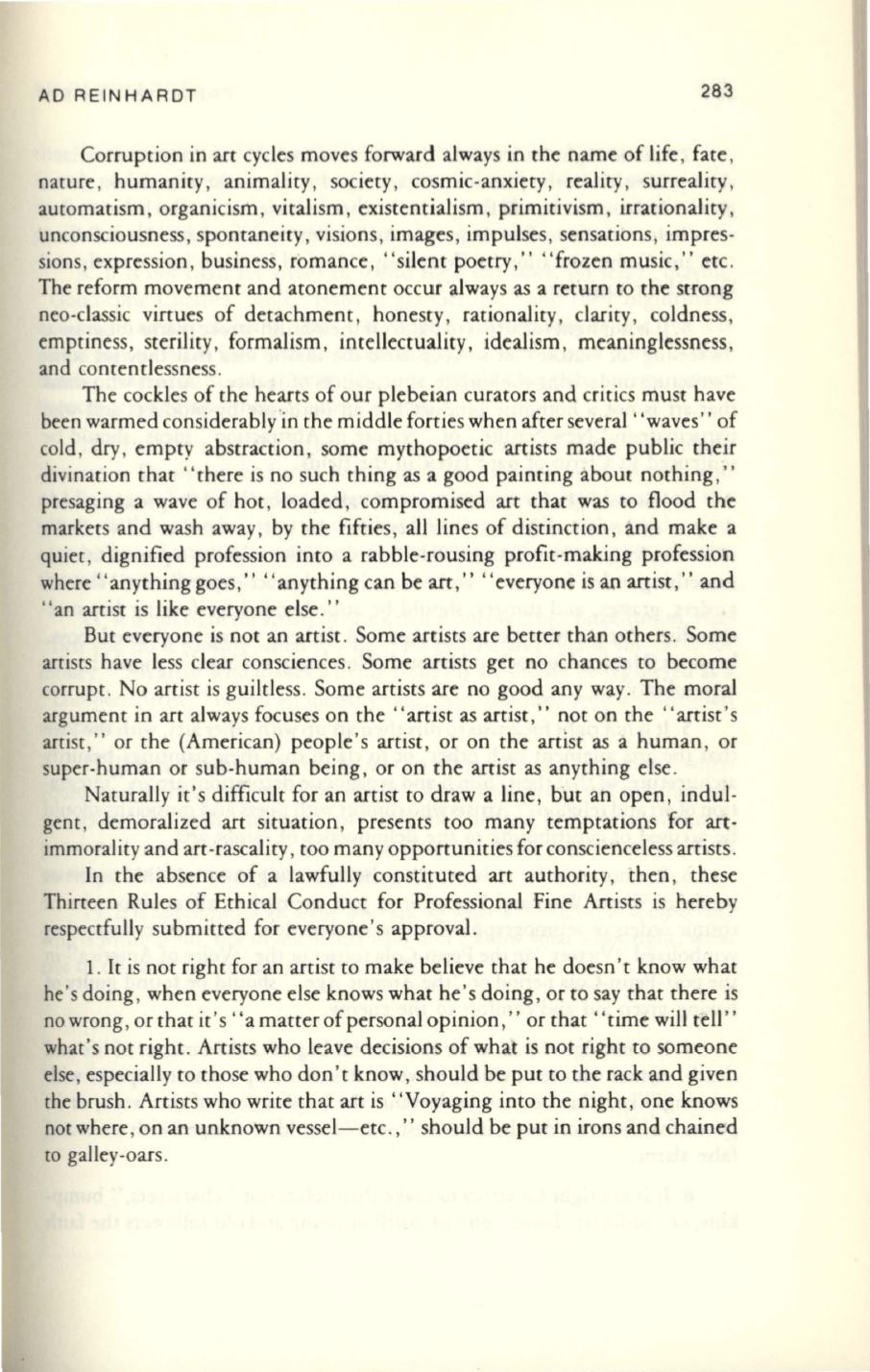
AD REINHARDT
283
Corruption in art cycles moves forward always in the name of life , fate ,
nature , humanity , animality , society, cosmic-anxiety , reality, surreality ,
automatism, organicism, vitalism, existentialism, primitivism, irrationality,
unconsciousness , spontaneity , visions, images, impulses, sensations , impres–
sions , expression, business, romance, "silent poetry," " frozen music," etc.
The reform movement and atonement occur always as a return to the strong
neo-classic virtues of detachment , honesty , rationality, clarity, coldness ,
emptiness , sterility , formalism , intellectuality , idealism, meaninglessness,
and contentlessness.
The cockles of the hearts of our plebeian curators and critics must have
been warmed considerably in the middle forties when after several' 'waves" of
cold , dry , empty abstraction, some mythopoetic anists made public their
divination that "there is no such thing as a good painting about nothing ,"
presaging a wave of hot , loaded , compromised an that was to flood the
markets and wash away, by the fifties, all lines of distinction , and make a
quiet, dignified profession into a rabble-rousing profit-making profession
where ' 'anything goes," "anything can be an ," "everyone is an anist," and
" an artist is like everyone else."
But everyone is not an artist . Some artists are better than others . Some
artists have less clear consciences. Some artists get no chances to become
corrupt . No artist is guiltless . Some artists are no good any way . The moral
argument in art always focuses on the" artist as artist," not on the "artist 's
artist ," or the (American) people 's artist , or on the anist as a human , or
super-human or sub-human being, or on the anist as anything else .
Naturally it's difficult for an artist to draw a line, but an open , indul–
gent, demoralized art situation , presents too many temptations for an–
immorality and art-rascality , too many opportunities for conscienceless artists .
In the absence of a lawfully constituted art authority, then, these
Thirteen Rules of Ethical Conduct for Professional Fine Artists is hereby
respectfully submitted for everyone 's approval.
1.
It is not right for an artist to make believe that he doesn ' t know what
he 's doing , when everyone else knows what he 's doing , or to say that there is
no wrong, or that it 's" a matter of personal opinion, " or that' 'time will tell"
what 's not right. Artists who leave decisions of what is not right to someone
else , especially to those who don ' t know, should be put to the rack and given
the brush . Artists who write that art is "Voyaging into the night, one knows
not where , on an unknown vessel- etc . ," should be put in irons and chained
to
galley-oars .


